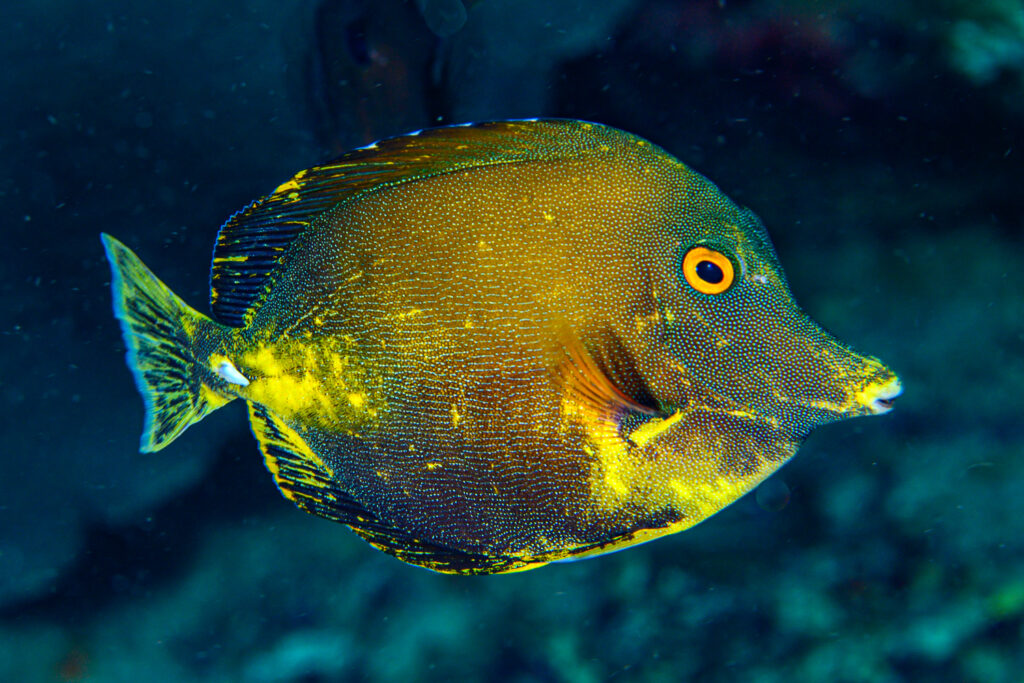
Aberrant Tangs have been going through insane hype in recent years. Some particular specimens from Indonesia are reaching just nonsense prices. Recently we were lucky enough to observe a unique individual we named the “Dirty Two-Tone Tang” for quite a while on the southern coast of Bali.
Found randomly in the Indian Ocean
Zebrazoma scopas with unusual coloration as shown here are sometimes also known as a Twotone Tang in the aquarium trade. While the distribution range of the Scopas Tang species is extensive and spreads all over the Indian and most of the Pacific oceans, the unique, aberrant forms known as Xanthic or Koi Tangs, and specimens like this “Dirty Two-Tone Tang”, are primarily encountered in the Indian Ocean.
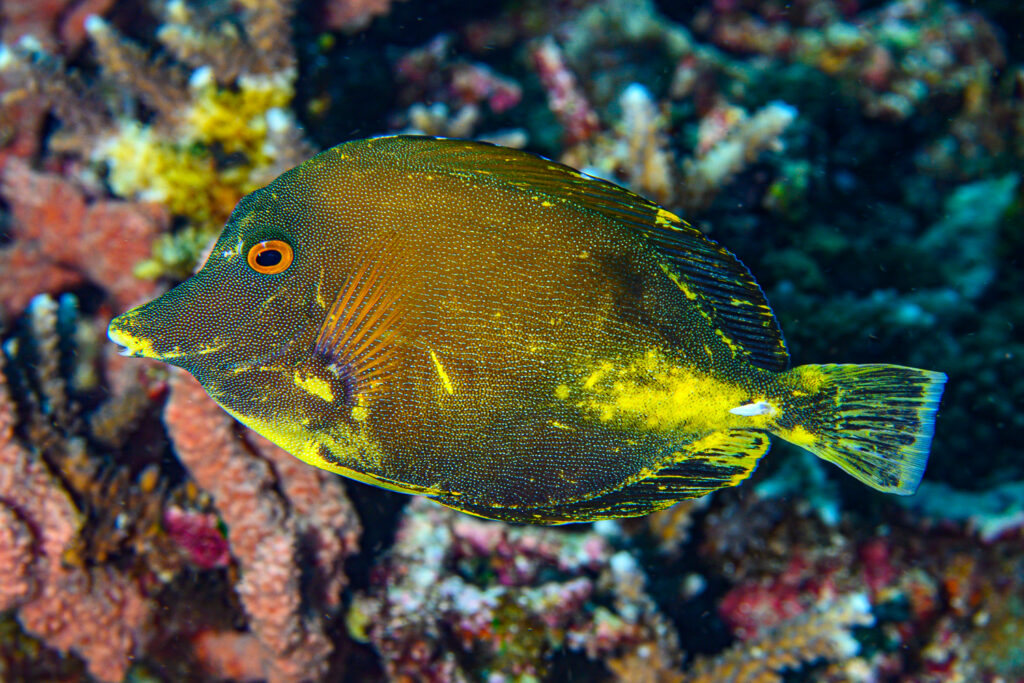
Most aberrant tangs found on the aquarium market originate from one area a few hundred miles off the southern Indonesian shores in the Indian Ocean. However, specimens also appear in a more random manner in all corners of the Indian Ocean. Indeed, some of them have been found in the Maldives, Seychelles, Kenya, or even in the Andaman Sea in Thailand.
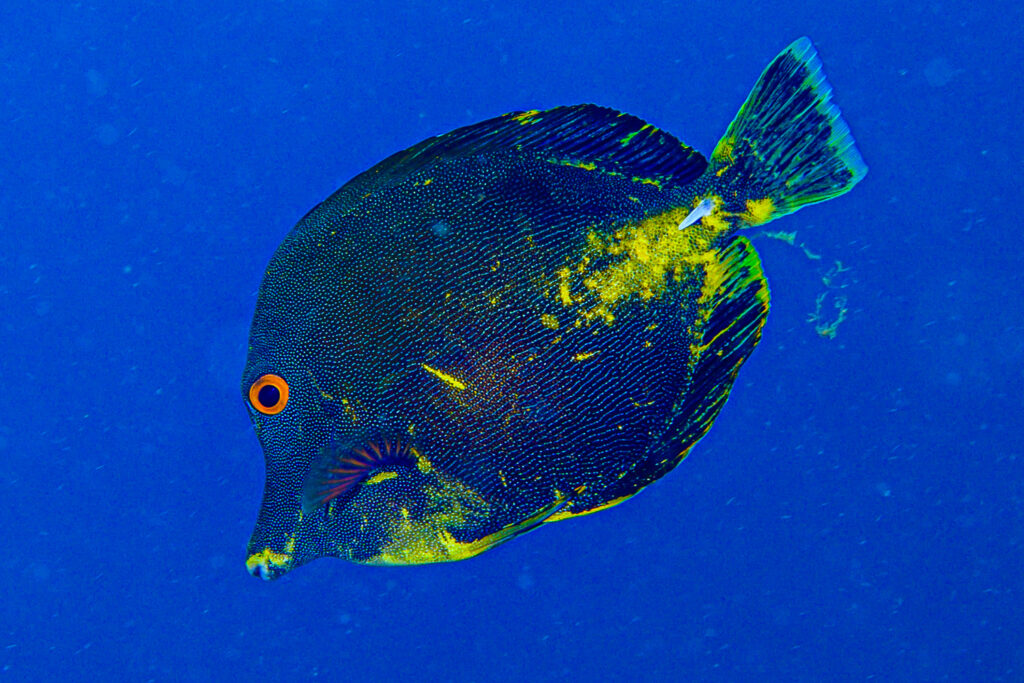
A rare video and few pictures:
We managed to film a short video of this fish, peacefully grazing over a classic field of coral rubble, a habitat that nowadays is becoming an increasingly common sight. But we were also lucky to come back to the same spot a couple of days later and grab a few pictures of it. It is probably not the craziest looking of all the aberrant tangs, its look is quite dirty, but it’s nice to see a unique, mildly unusual form in an area where we didn’t necessarily expect it.
A phenomenal mature adult fish:
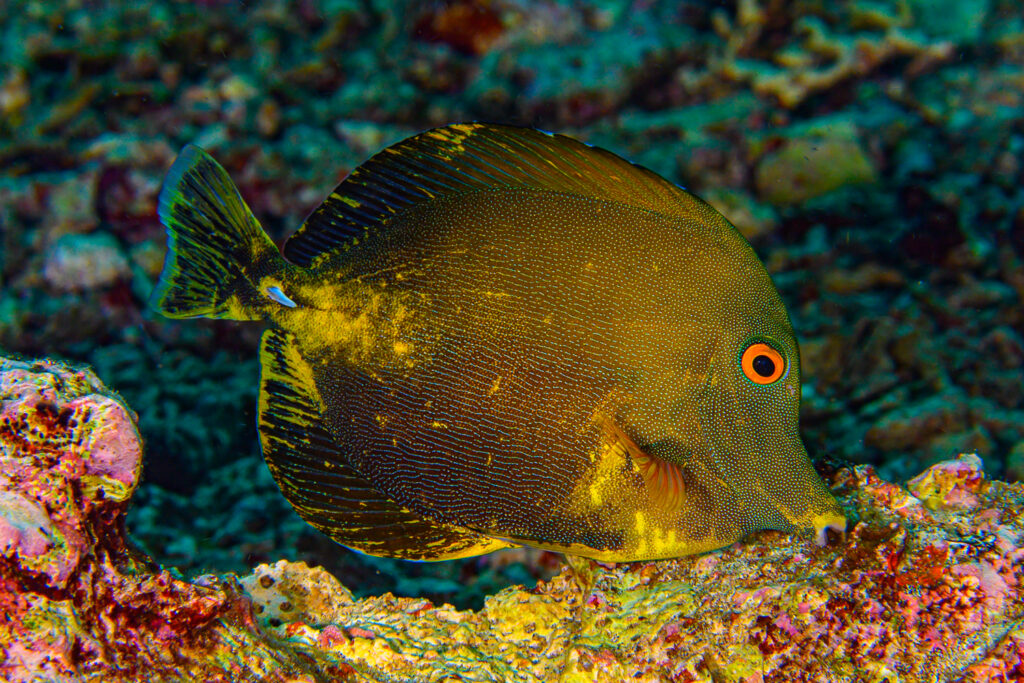
While there are millions of Scopas Tangs all over the shallow reefs ranging in sizes from 1-inch (2.5 cm) juveniles, all the way to 4-5 inch (10-12.5 cm) large adults, we’ve never seen a young xanthic tang. This unique coloration seems to only be found on mature, older fish. It seems to be also a long, progressive process that evolves deeper as the fish grows older. As this fish can grow a few centimeters more, it would be interesting to find it again and see if the unusual coloration has changed or spread.
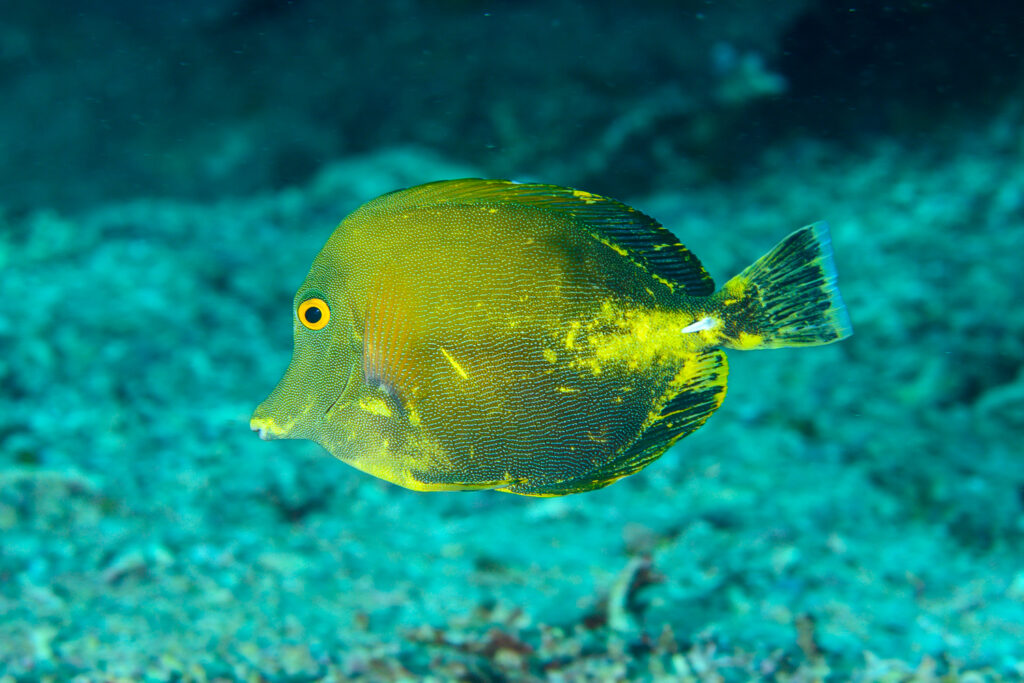
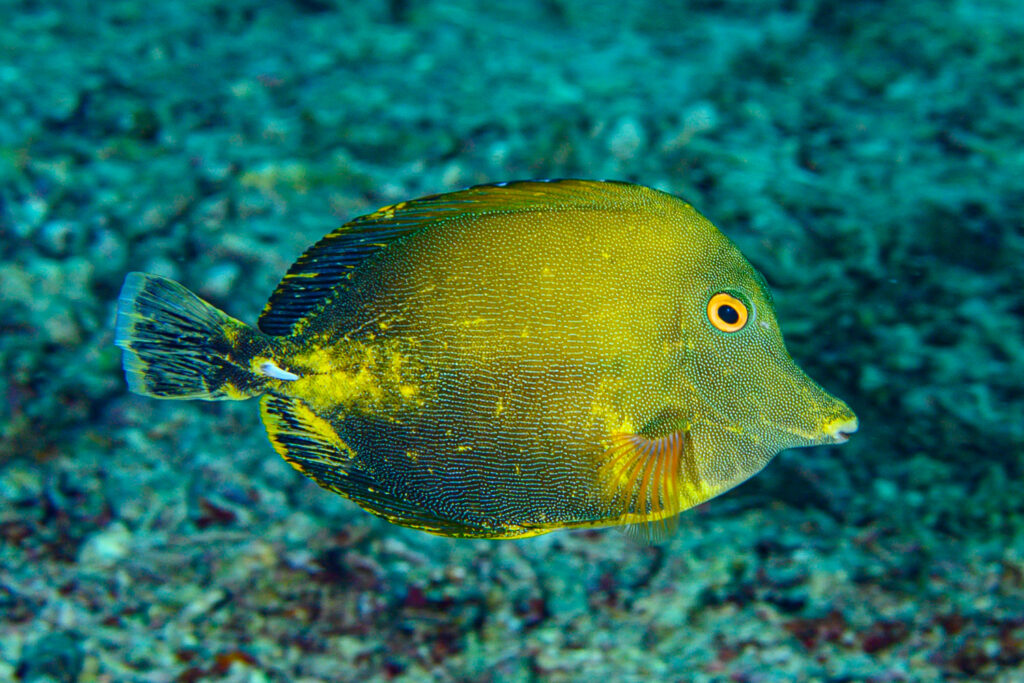
Watch The Dirty Two-Tone Scopas Tang in South Bali




